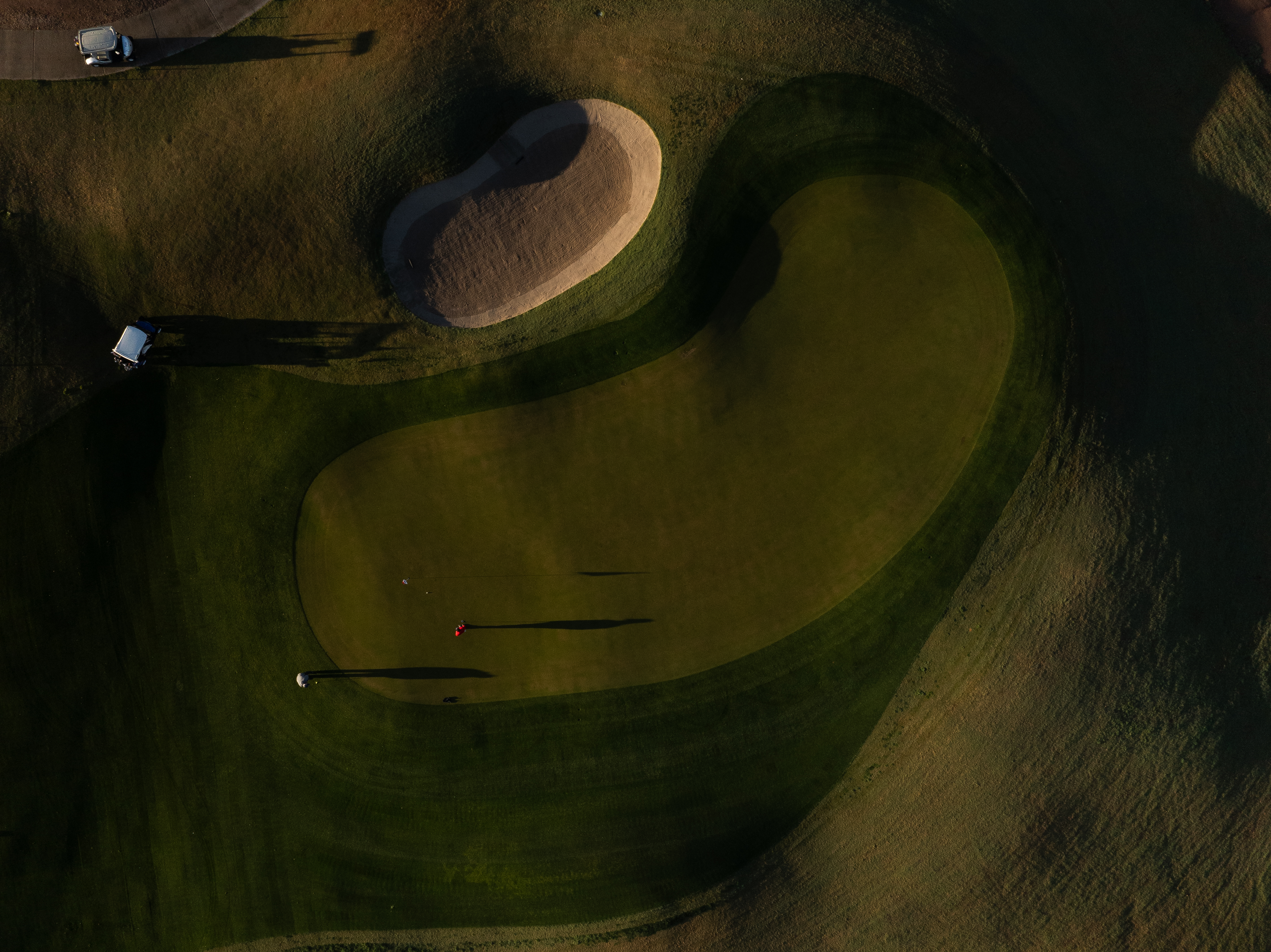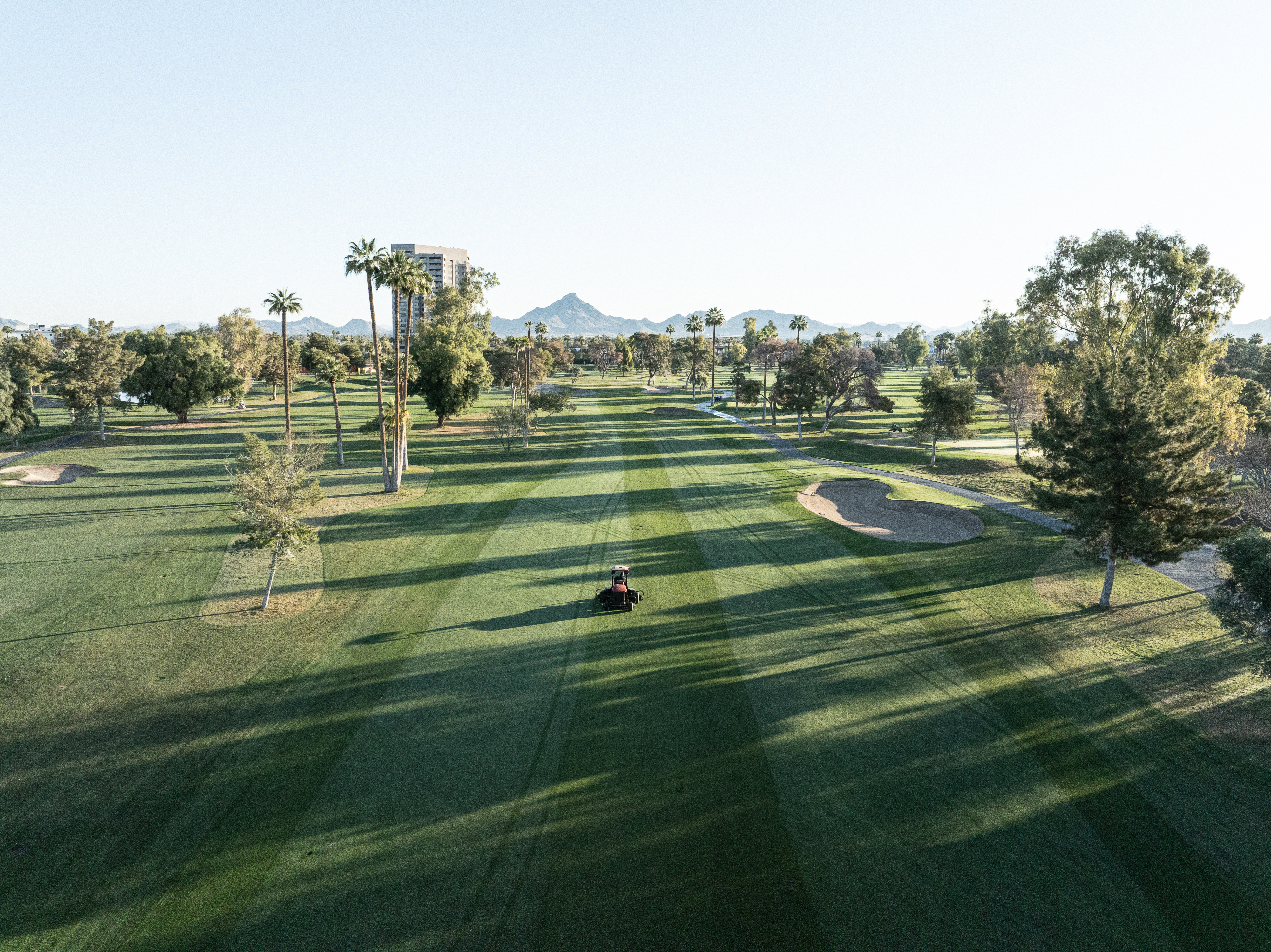6 min read
Golf's True Dawn Patrol
(Featured Image by Josh Hanson) Let's hear it for the greenskeepers. It’s a cold winter’s morning in Phoenix, Arizona. The time is 5 a.m.—still an...

(Featured Image by Josh Hanson)
There are only two parts of a golf course every player is destined to put their spikes—the tee box and the green.
However, as golf course designer Gary Brawley puts it, “You can have marginal tees and fairways, but if you have great greens, people will continue to come back to play that course.”
One of the most time-consuming and expensive (on average 30% of a maintenance budget) parts of the course to maintain—and for good reason—greens are the focus of not only the designer and maintenance team, but of every golfer as well. Upon visiting Brawley at one of only five putting courses in Arizona, Brawley pulled back the curtain on the multi-step process of designing greens.
The Green Complex
“It’s more about the green complex, as a whole, than just the green surface. I focus on how everything surrounding the green complements what’s happening on the green itself.” From the size of the green’s collars—heavily influenced by the club’s inherent preference of walking or riding—to the approach shots and potential hazards, a green is the culmination of all variables that create a golf course.
Beneath that beautifully contoured carpet of grass is an entire ecosystem, primarily focused on drainage, which largely impacts what’s happening above ground. “Everyone thinks the greens are just created, but it’s not that simple. I have to set everything up based on how water is getting out of there.” It begins with four inches of gravel and 10 to 12 inches of sand, in and out sprinkler heads on the perimeter of the green, complemented by slopes and contours that direct both the ball and water where they need to be, respectively. The green complex is complicated.
The Speed-Slope Equation
Brawley paints a picture, “Think about the drive from Sedona to Flagstaff. You can only go about 35 miles per hour right? That’s because it’s steep and curvy. But the drive from Phoenix to Palm Springs, you can go 80 miles per hour. That’s because it’s flat. Same thing with putting greens.”
More slope = less speed.
Less slope = more speed.
In order to build putting greens that people enjoy, Brawley has to understand the club’s demographics and styles of play. Some clubs want faster greens, while others want slower greens.
“I like to have some contour and some character to the greens because it needs to be fun. Right? But it’s all about finding balance and that balance is different from course to course,” Brawley divulged. Not only do slopes and contour provide fun, they also enable players of all skill levels to get balls to the pinnable areas of the green.
Designing for Variety & Inclusivity
One of the greatest challenges of designing greens is providing a variety of hole locations that are agreeable to every golfer. By dividing each green (which averages ~6,500 sq.ft.) into three to five pinnable areas, Brawley creates greens within greens. “In between the pinnable areas is where I can utilize contour to make transitions or steeper slopes in the green,” explained Brawley.
Brawley’s designs cater to both high handicappers and scratch golfers. For instance, “If I have a back right hole location around a bunker, I’ll make sure there’s a contour in the green to feed a putt back there so that the high handicapper who’s not as confident in their wedges doesn’t have to fly it. There’s a balance of air and grounding, and that’s where the surroundings come into play.”
Collaboration is Key
It takes a village to do it right and alignment across all stakeholders— from the owner to the designer to the director of agronomy—is key to the success of any course re-model, particularly the greens.
Matthew Rusch, Director of Agronomy at Thompson Golf Group, is a future-thinking man. “What it comes down to is the ease of future maintenance. We work very closely with our designer and owner to make sure we are providing a plan that is sustainable from a water and budgetary perspective, as well as one that increases the enjoyment and course availability to our golfers,” said Rusch.
It goes without saying, the goal is to always get to the green (in as few strokes as possible of course). But it doesn’t matter whether you drive the green or get there in three, if you’re putting on a surface reminiscent of asphalt, you could be there all day. Great greens make for great rounds. Great rounds make for happy golfers. Happy golfers make for a successful golf course, and that’s in large part because of the greens.
.png?width=5243&height=5244&name=NAKIN%20PHOTO%20(yes%20i%20dropped%20the%20p%20on%20purpose).png)
(Photo by Josh Hanson)

6 min read
(Featured Image by Josh Hanson) Let's hear it for the greenskeepers. It’s a cold winter’s morning in Phoenix, Arizona. The time is 5 a.m.—still an...

SCOTTSDALE– Mahanth Chirravuri captured the 99thArizona Amateur Championship at Desert Highlands Saturday, draining a 25-foot eagle putt on 18 to...

SCOTTSDALE, Ariz. – AZ GOLF is proud to welcome five driven and talented individuals — Andrew Vinci, McKinley Burnett, Reid Chamberlin, Grace Garner,...